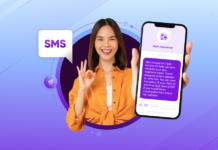Omnichannel business strategy is an approach to selling that focuses on providing a seamless buying experience whether the client is engaged online, by telephone, or in a brick-and-mortar store.
om·ni·chan·nel
/ˈämnəˌCHanl/
adjective
1. denoting or relating to a type of retail that integrates the different methods of shopping available to consumers (e.g., online, in a physical store, or by phone).
“80 percent of sales for omnichannel retailers happen in the offline world”
Of course omnichannel has expanded to many use cases beyond retail. In an ideal omnichannel buying experience, customers can switch from one channel to another without fear of disruption to their journey. This is made possible by one ‘system of record’ like an ERP that maintains a single source of truth regardless of where the customer is engaging.
To capture the full value of digital distribution, companies need to make sure the human touch is still part of the equation.
Consider that since 2010, when the term omnichannel was adopted, consumers have evolved to a digital-first mentality. That paradigm has fueled the fires for companies to jump on the omnichannel bandwagon, often forgetting the value of the human touch in customer engagement.
To make sure the human touch doesn’t become an Achilles heel in the quest for omnichannel business, especially for customer service, we need to rethink omnichannel and reframe how we serve customers as “ChannelLess™” interactions. We’ll explore what that means below.
What is Omnichannel Customer Service?
One could assume that like omnichannel commerce, omnichannel customer service is built to service consumers across all communication channels or modalities like chat, messaging, and phone seamlessly and uniformly, and is touchpoint-agnostic and customer-centric.
However, this is often NOT the reality. Most omnichannel customer service platforms are like Rube Goldberg contraptions created by legacy vendors trying to deal with the new reality of a digital-first world. Such solutions are all about channels loosely tied together by unified routing and reporting. Most omnichannel solutions direct phone calls, email, chat, SMS and other supported channels via a central routing engine, generally built for phone call routing. However, agents are often trained to service customers via a small subset of channels, and the customer still has to decide what’s the best channel to use.
Also, businesses often have restrictions on what kind of customer service is available in which channel(s). For example, most online banking requests are typically not suited for traditional add-on chat, since most lack the required authentication and security, leaving customers to self-serve or call a phone line. Yes, unified routing and reporting can make managing channels easier, but customers are left wondering why they have to choose between calling the bank, visiting a branch, chatting with a representative, or sending an SMS. Customers are surprised when the agents have to say “Oh, you need to call us,” or “Oh, you need to come to the branch.”
Thanks to ‘omnichannel’ customer service platforms that were built for phone calls and expanded to bolt on separate channels for chat, SMS, email, video, and so on, customers (and the reps that serve them) are more frustrated than ever before.
Unified, Familiar Customer Experiences
What customers expect is one “ChannelLess” experience that can support all modalities of communication from all touchpoints. Consumers want their retail and business experiences to mirror how they engage with their friends and family members using iMessage, WhatsApp and other popular messaging services. The missing link? Each of these services enable consumers to text, talk and communicate via video in the same channel.
What if you can do the Same with Your Customers?
What if you can engage your customer from any touchpoint they prefer, say chat, and then add a modality like audio, video, supported by CoBrowsing and file transfer as needed, to solve customer’s issues in the same engagement without ever having to tell the them they need to call in or visit a physical branch.
If you have one platform that handles all of the modalities like chat, audio, and video with file transfer and CoBrowsing, why do you need omnichannel? Let’s stop this channel madness and engage the customer in a ChannelLess manner like they want to be engaged.
Billions of iMessage & WhatsApp fans can’t be wrong on how they prefer to communicate. The Glia platform was designed for this modern way of “consumer-grade” communication. Glia engagements can be started with any modality—most customers prefer to start with chat—and others can be seamlessly added to the engagement, just like on iMessage or WhatsApp. This also extends to good old phone calls, and even SMS, in the same seamless manner. We call this way of engaging with customers Digital Customer Service.
Ironically, Digital Customer Service makes your customer service operation as simple as using your old phone system: only one ChannelLess ‘channel’ to manage and staff. If you can manage all your agents for a single engagement interface, it means better agent utilization. If agents can employ CoBrowsing, audio, video and chat at the same time, they can bring clarity and greater human connection to interactions, and solve customer issues within one satisfying engagement. It also simplifies and streamlines reporting and supervision.
Traditional omnichannel is “lipstick on the pig” that some vendors are pushing because they have to. Customers want an iMessage-like experience with the businesses they support. You have a lot of operational efficiency to gain by managing only one ‘channel.’ That’s the fundamental truth of this digital world we live in.
When evaluating a solution for your omnichannel needs, beware of false promises of Omnichannel Customer Service. Instead, think ChannelLess and look for a digital customer service platform that is customer engagement centric—not channel centric—and built to engage customers across all modalities and touch points in the customer journey regardless of where that journey starts or goes.





